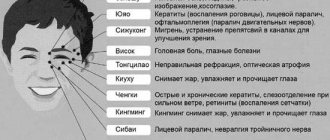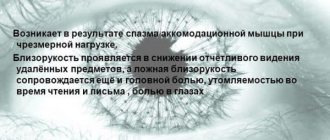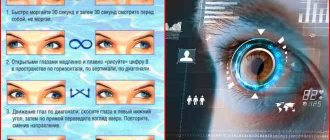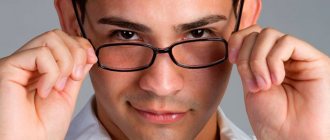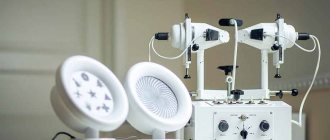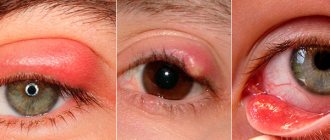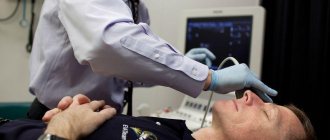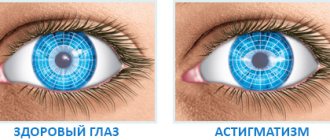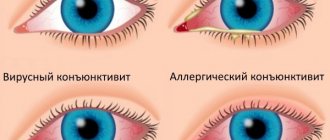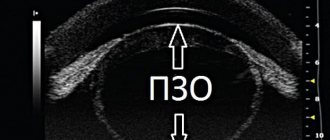Myopia is a pathological process accompanied by impaired ability to clearly see objects located in the distance. The disease is characterized by a significant decrease in the acuity of visual perception.
According to statistics, almost 30% of the world's population suffers from myopia. Myopia is treated with drugs. Vision is corrected with glasses and lenses. Special gymnastic complexes help prevent the progression of the disease. They train the oculomotor muscles, forcing them to do their job correctly.
The effectiveness of gymnastics for myopia
Many complexes promise to restore visual perception in myopia without surgical intervention. Therefore, an increasing number of patients are interested in special gymnastics for the visual organs.
Such exercises are accommodation training, which allows the eye to clearly see objects at far and near distances.
If a person can train the ciliary muscle, which tenses when looking at a nearby object and relaxes when looking at a distant object, its normal functioning can be maintained.
Vision training allows you to:
- improve microcirculation;
- strengthen the oculomotor muscles;
- restore the accommodation reflex;
- activate the functions of the respiratory and cardiovascular systems;
- slow the progression of myopia or stop the disease.
Cyclic exercises of moderate intensity can improve visual perception. However, they must be performed regularly over a long period.
Exercise therapy for high myopia is also useful. Therapeutic exercise can reduce the degree of myopia, but at a high stage it will take at least several months of daily exercise to obtain a slight positive result.
Basic set of exercises
To restore vision in case of myopia, exercises specially designed for children, taking into account age-related characteristics, are used as an important component of complex treatment. These are gentle exercises with a gentle effect on the visual apparatus, helping to prevent the disease or slow down its development.
It is recommended to teach children to perform the following gymnastic exercises used for myopia in children:
- “Red dot”: taking a deep breath twice, then gradually exhaling, children should imagine that each of them has a bright dot drawn between their eyebrows. Next, they should try to move their gaze to it and hold it there for 3 seconds, after which they return their gaze to its original position. Then you need to close your eyes for 5-7 seconds. Three passes 5 times are recommended.
- “Nose”: now we imagine a point at the tip of the nose. Having inhaled and exhaled smoothly, children focus their gaze on the tip of their nose for 3-5 seconds, then relax and close their eyelids for the same 5-7 seconds. Repeat three times 7 times.
- “Here and there”: without turning your head, you need to move your gaze along imaginary lines: up right, down right, up left, down left. At each extreme point, the gaze stops for 5-10 seconds, then moves to the next point. Will be performed 5 times in three passes.
- “Clock”: kids move their eyes left and right 20 times without pauses, and so on 5 times with breaks for a minute rest with their eyes closed.
- “Semicircle”: the guys should describe semicircles with their eyes, first on the right, then on the left, alternating them. The eye movement begins at the highest point, describes a semicircle and ends at the lowest point. 10 repetitions, three passes.
- “Distance”: select a point outside the window and a second point in front of it or on the glass itself. Without moving your head, you need to look at both points alternately 25 times without a break.
- “Circles”: the guys perform a circular rotation with their eyes, first clockwise, then counterclockwise.
With the help of the described eye training for myopia in children, you can slow down the development of the disease or prevent its occurrence.
You can also learn your doctor’s recommendations from this useful video:
Gymnastics for the eyes
Bates exercise system
This technique has not yet been recognized by science. A non-drug method of restoring vision was invented by William Horatio Bates. He concluded that a significant portion of refractive error develops as a result of abnormal muscle tension.
The exercises developed by Bates accustom the eyes to passive vision and relax them.
Palming:
- Take a comfortable sitting position. It will be more convenient if you sit at the table.
- Cross your fingers. Cover your eyes with your joined palms. Sunlight should not penetrate your fingers, and your palms should not pinch your nose.
- Calm your breathing and wait until the glare disappears. When maximum darkness comes, it means that the level of excitation of the nerve cells has decreased and the eyes have completely relaxed.
The second exercise is psychotechnics. A person is immersed in pleasant memories and relaxes as much as possible. Close your eyes and concentrate on something positive, try to reconstruct the event. This technique is recommended to be used with palming, but with open eyes. This can be achieved by regularly performing psychotechnics.
Bates recommends sunbathing. This system is called solarization. Close your eyelids and turn your face towards the sun. If discomfort occurs, you should blink frequently.
Complex by M. D. Corbett
Before performing the Corbett method, it is recommended to stretch your neck muscles. Complete the following exercises: Corbett is a student of Dr. Bates and has improved and developed her teacher's theory of improving visual perception without glasses or surgery. She also developed her own complex. To perform the exercises, the Sivtsev table is used. Algorithm of actions:
- Move 2 meters away from the table.
- Bring the drawn mini-table directly to your eyes.
- Read the first line from a small table, move it away, read it at arm's length.
- Look at the same line, but in a large table.
- Close your eyes and make a few turns to the sides.
- Repeat from point 1, but read the second line.
Thus you need to get to the last line. Slowly perform each step without losing your breath.
Gymnastics from R. S. Agarwal
Professor Agarwal systematized the Bates technique. Based on it, he developed his own complex. To perform this you will need an OM card.
Algorithm of actions:
- The card is placed at a distance of 30 cm from the face.
- Focus your gaze on the central part of the picture, mentally realizing that it has more contrast.
- Move your eyes around the circle, rotating your head. When moving, close and open your eyelids. Perform the exercise slowly, monitor your breathing.
- Move the card to a distance 2 times greater, but not more than 1.5 m. Perform several approaches.
Next, repeat the exercise only with half-closed eyes. Helps train the accommodative reflex and strengthen muscles.
A set of exercises from M. Windolf
Like previous professors, Windolf is a continuator of the Bates method. He pays more attention to improving accommodation. Windolf believed that the therapy was more effective in combination with relaxation of the tension of the eye muscles.
He proposed the following gymnastics complex:
- Place any object at a distance of 40 cm from the eyes. Blink, pause at times and close your eyelids completely.
- An object located at the same distance is mentally reduced in volume. When performing this exercise, squeeze the orbital muscles, which give the feeling of retracting the eyeball back.
The technique allows you to reduce the time of fatigue, relieve discomfort in the eye area and pain in the head.
Exercise system from Zhdanov
Gymnastics is prohibited during the rehabilitation period after eye surgery, if there is a threat of retinal detachment or ruptures. It is not recommended to use glasses when performing this task.
Exercises are performed at least 3 times a day for 10 minutes. This is more effective than a one-time lesson for half an hour.
Method according to Zhdanov:
- Stand with your feet shoulder-width apart. Blink your eyes and sway slightly, moving from one leg to the other. Swaying, blinking your eyes. Make side turns. Do 10 repetitions, ending the exercise with blinking. Turn your head in different directions. Make sharp bends 2 in one direction. First right and left, then back and forth. After the exercise, blink again.
- Massage your hands until warm and do the following: press the inner corner and vibrate. Repeat the same with the outer corner of the eyes.
- Draw diagonals with your eyes, helping yourself with your hands. Draw a rectangle and other shapes. Shake your hands to relieve tension.
- Draw a dial with your eyes. Finish the exercise by blinking.
The gymnastics for the eyes ends with reading words. The first exercise is performed. At a distance of 1 meter, a sheet of words is attached, each line of which has smaller letters. You need to read the words while swaying.
Avetisov method
The professor’s technique gives positive results in children and adults. It relieves spasm of accommodation and relaxes the ciliary muscle.
Set of exercises:
- Take a comfortable sitting position. Keep your head straight. Close your eyes, open your eyes wide.
- Flash quickly, make intense movements.
- Extend your hand in front of you, fix your gaze on your finger. Gradually move your finger closer to your eyes until the image doubles.
- Perform a massage in a sitting position, then a series of 3-second pressure on the eyeballs.
Who is the program contraindicated for?
Despite the effectiveness of a computer simulator for improving vision, it is not recommended to train if the brain is predisposed to paroxysmal phenomena. In case of persistent accommodation spasm, it is recommended to consult an ophthalmologist before using the program. People prone to epileptic seizures should approach the use of Relax with caution. With such exercises for the eyes, it is important to take into account the individual reaction of the body. If after the class a migraine appears or your eyes begin to hurt, then you must abandon the program.
How to get the most out of exercise
To get the maximum effect from eye gymnastics, it is not enough to increase the number of approaches. A set of measures is needed to combat myopia.
To enhance the effect, the techniques are used simultaneously with music therapy. Calm music allows you to close your eyes and relax; it acts similarly to yoga, only the extraocular muscles work.
Chromotherapy has a good effect. This is a natural treatment using electromagnetic radiation. It has a multifaceted effect on a person. Red stimulates blood circulation, accelerates microcirculation and prevents age-related changes. Green light is calming and reduces inflammation. Yellow - activates brain activity, improves memory and fights insomnia.
Proper nutrition plays a significant role. It is important to consume more products with retinol, ascorbic acid, and riboflavin. These vitamins improve the quality of visual perception by 10%.
Recommendations for improving the results of exercises for myopia
In order for eye exercises for myopia to work more effectively, an optimal diet is important - a balanced diet with a sufficient amount of carbohydrates, proteins, and vitamins. Vitamins A, C, E in complex treatment help restore vision.
Vitamins of these groups are found in yellow peppers, carrots, eggs, fish, nuts, wheat sprouts, blueberries, and viburnum. In the prevention and treatment of myopia, split meals, eating small portions of food at least 6 times a day, play an important role.
Training glasses
Perforated glasses (with holes) are a medical device that has its own indications and contraindications for wearing. Used for refractive errors, asthenopia and anisometropia.
Contraindicated in case of increased intraocular pressure, divergent strabismus. They will not help solve the problem, but on the contrary, will worsen the condition. For progressive myopia, prohibited.
Perforated products are a plastic frame with opaque plastic plates containing many holes. Wear in sufficient light and no more than 2-3 hours a day.
To achieve a positive effect, while wearing it, it is recommended to look at distant and near objects, and examine objects at different distances.
They will not cure defects in visual perception, but will serve as an additional incentive for its restoration. They correctly distribute the load, giving rest to tense extraocular muscles and loading weak ones. Perforation glasses relieve asthenopia. With prolonged use, the deterioration of visual perception stops.
